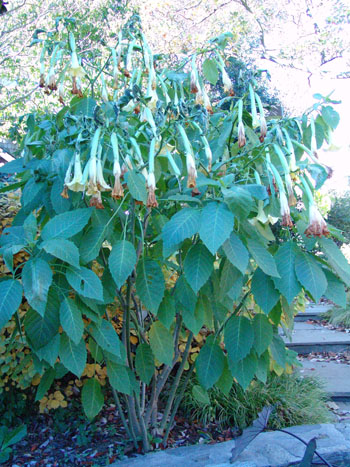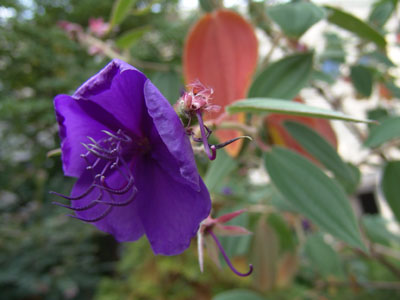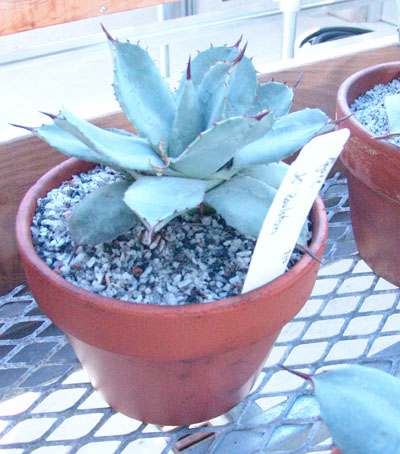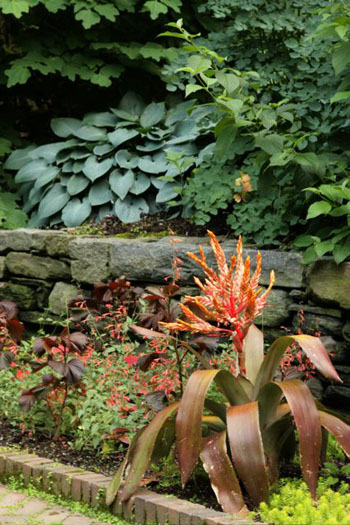Overwintering Tropicals: Part 3

As we continue our series on how to overwinter tropicals, we have discussed plants with bulb, rhizome, tuber, fleshy root including Musa, Canna, Alocasia, Colocasia, Xanthosoma, Hedychium, and Alpinia.

Purple flower of Tibouchina. photo credit: R. Manduca
The next types of plants are those which you will not cut back, but will still allow to lose their leaves and go dormant. These include such plants as Tibouchina, Brugmansia, Euphorbia cotinifolia, Plumeria, and Melianthus major. If they are growing in a container on your patio and the container is of a reasonable size, you may want to keep it in this container for the winter.
If the container is too large, the plant can be transplanted into a smaller plastic nursery pot for ease of handling over the winter. If transplanting is necessary make sure that the plant is transplanted into the nursery pot without causing too much damage to the roots. Again, filling in the extra space in the pot with bark mulch is good. Once the weather becomes cool at night I would consider bringing these plants into the basement. Once situated in the basement they will start to go dormant. You may need to cleanup around them as the leaves will brown and fall off.

Agave 'J.C. Raulston' works well as a houseplant. photo credit: R. Robert
Finally, the last group of tender plants that are worth keeping as whole plants are those which do not die or get cut back. This group would include bromeliads; Phormium, New Zealand flax; Dianella, Agave; cactus; etc. These plants cannot successfully be kept in a basement because they are still actively growing during the winter. Keeping them over the winter if you do not have a greenhouse can present a problem. If you just have a small number, they can be dispersed through the house and treated as houseplants. If you have a sun porch, this will remedy part of your problem.
An unheated or slightly heated sun porch will save you a lot of trouble finding homes for these plants. Even if it gets into the 40’s many of them plants will be fine. Phormium, Dianella, Agave and cactus can all take reasonably cold temperatures. During the winter they will not grow very much so you want to keep the soil on the dry side. Too much water will result in the plants rotting.
Before you bring them into the house in the fall make sure the plants have been deadheaded, old leaves removed, and you have checked them carefully for pest and disease problems. As a precaution, you may want to drench them with an insecticidal soap.

Bromelid growing in the Annual Border of the Terry Shane Teaching Garden. photo credit: D. Mattis
For bromeliads and perhaps more tropical-type house plants you need to find warmer locations. Bromeliads make attractive house plants for the winter. The advantage of keeping bromeliads from year to year is that they will get bigger and bigger. Again, checking for pest and disease problems is important before integrating them with your other houseplants.
All these are viable and easy methods for over-wintering plants for those of us who are not fortunate enough to have access to a greenhouse. Once the plants are packed away in the basement, there is very little you have to do for the remainder of the winter. Those plants which you have brought into the house can simply be treated as house plants.
Once spring arrives, all these plants can be placed back into the garden around the middle of May. These methods create ways for the average homeowner to amass an interesting collection of tropicals and tender perennials without the aid of greenhouse.





Rhoda
Posted at 11:32h, 23 NovemberMight I also suggest using a horticultural oil for preventative spraying of your tropicals before bringing them indoors. Oils smother insects and their eggs. Soaps disrupt the membranes of adult and larval stages. But oils can also protect against several types of fungus (mildews and leaf blights in particular). Some plants have sensitivities to horticultural oils or insecticidal soaps, so be certain to read the label first before selecting your method of preventative spraying. There is no one-size-fits-all remedy.